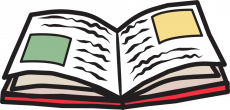EYFS Reception Lesson Plan: Frosty Fun - Tactile Winter Activities
Age Group: Reception (4–5 years)
Duration: 30–40 minutes
Theme: Winter Sensory Play
Focus Areas:
- Physical Development: Fine motor control
- Communication & Language: Vocabulary and expressive language
- Literacy (Writing Framework): Oral rehearsal and mark-making
Links to EYFS Early Learning Goals
Physical Development:
- “Hold a pencil effectively in preparation for fluent writing.”
- “Use a range of small tools, including scissors, paintbrushes, and cutlery.”
→ Achieved through scooping, shaping, and sorting tactile materials.
Communication & Language:
- “Express ideas and feelings using full sentences.”
→ Achieved through describing textures and discussing sensory experiences.
Literacy:
- “Write recognisable letters, most correctly formed.”
→ Achieved through mark-making extension (drawing winter scenes) and oral sentence building.
Links to Writing Framework
Oral rehearsal before writing:
→ Children describe textures and sequence actions verbally before drawing or writing.
Vocabulary development for descriptive writing:
→ Teacher models words like “cold,” “soft,” “slippery” and encourages use in sentences.
Fine motor readiness for handwriting:
→ Scooping, pinching, and sorting strengthen grip and control.
Learning Objectives
- Explore winter-themed sensory materials to develop fine motor skills.
- Use descriptive vocabulary to talk about textures and sensations.
- Practise oral sentence building linked to sensory experiences.
- Build confidence in mark-making and early writing readiness.
Resources
- Faux snow (cotton wool, shredded paper, or instant snow powder)
- Ice cubes or frozen gel packs
- Wool scraps, ribbons, and textured fabrics
- Scoops, spoons, tweezers, and small containers
- Sorting trays
-
Optional: winter-themed toys, storybooks (The Snowy Day)
Room Setup
Winter Sensory Stations:
- Snow Station: Scooping and shaping faux snow.
- Ice Station: Stacking and sliding ice cubes.
- Texture Station: Sorting wool and ribbons by colour/texture.
- Clear movement paths for safety.
-
Mats or trays for easy cleanup.
Step-by-Step Lesson Plan
1. Starter (5 mins) – Hook
- Show a Winter Mystery Bag with items (snowflake, wool, ice cube).
- Ask: “What season do these belong to?”
- Introduce theme: “Today we’ll explore winter textures and use our fingers to play and learn!”.
2. Main Activity (20 mins) – Sensory Stations
Rotate children through stations:
- Snow Station: Scoop and shape faux snow.
Prompt: “Can you make a snowball? How does it feel?”.
-
Ice Station: Stack ice cubes, watch melting.
Prompt: “Is it slippery? What happens when it melts?”.
-
Texture Station: Sort wool and ribbons.
Prompt: “Which one feels soft? Which is rough?”.
-
Encourage full sentences and new vocabulary.
3. Reflection & Language Focus (5–7 mins)
Gather children:
- “What was your favourite texture?”.
- “Which was cold? Which was soft?”.
- Reinforce descriptive words: cold, smooth, fluffy, slippery.
- Praise effort and creativity.
Adaptation
Support:
- Larger tools for children with emerging motor skills.
- Visual prompts and modelling for EAL learners.
Challenge:
- Ask confident children to sequence steps (e.g., “First scoop, then pour”).
- Encourage two-adjective descriptions (e.g., “soft and white”).
Assessment Opportunities
Observe:
- Grip strength and finger control during scooping and sorting.
- Use of descriptive vocabulary in discussion.
- Ability to form oral sentences.
Extension Ideas
- Mark-Making: Draw a winter scene and label textures (soft snow, cold ice).
- Story Link: Read The Snowy Day and discuss textures mentioned.
-
Math Connection: Sort items by size or count scoops of snow.
